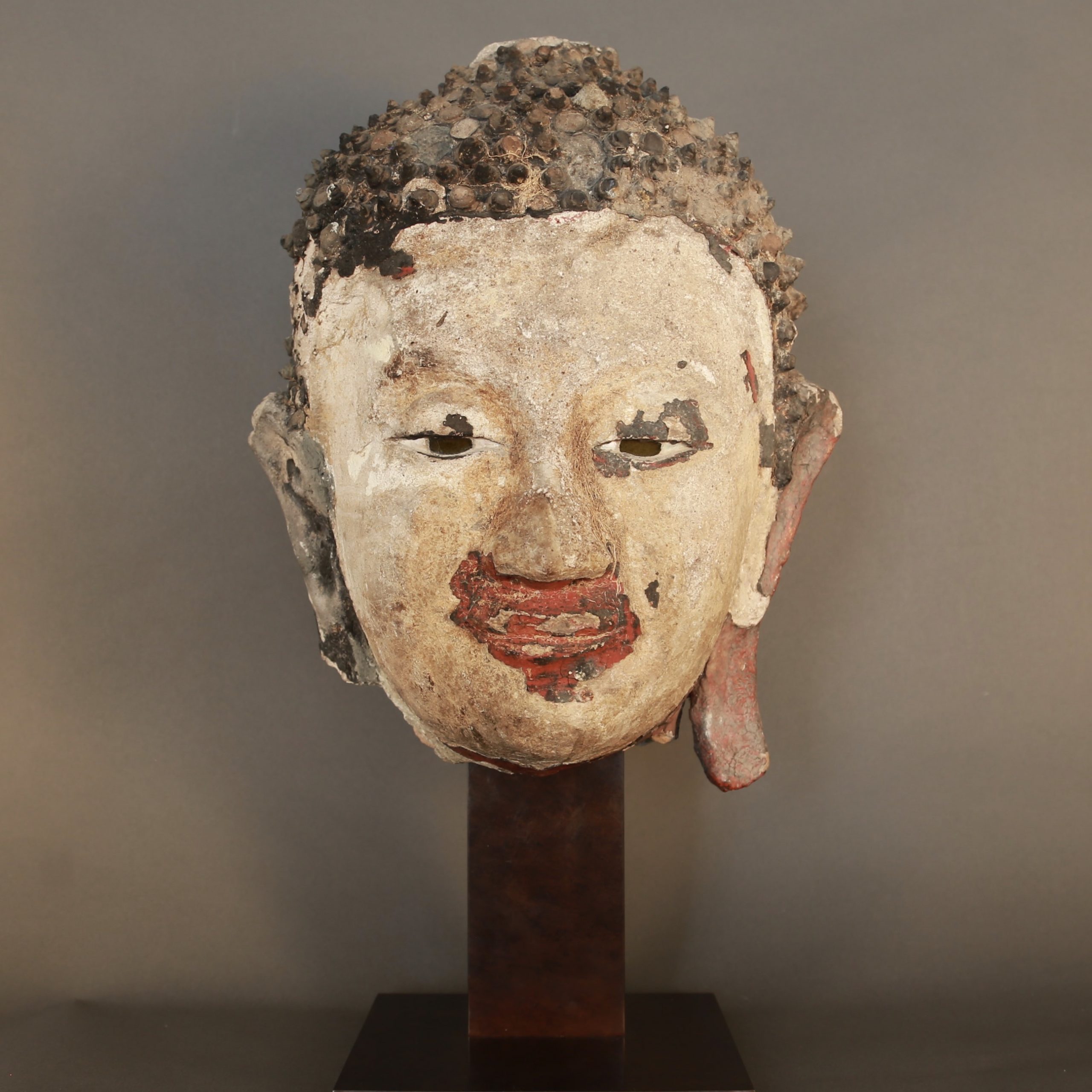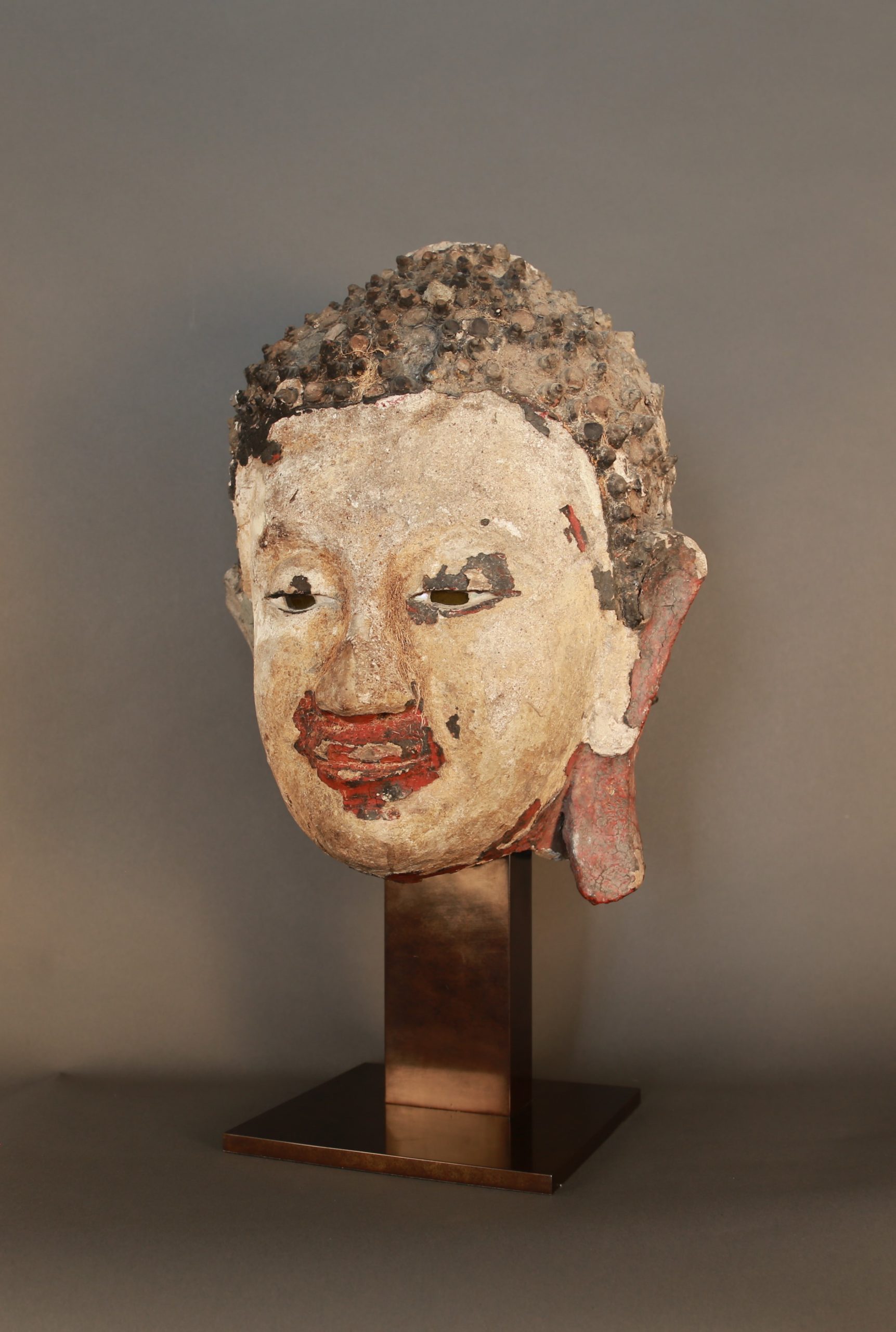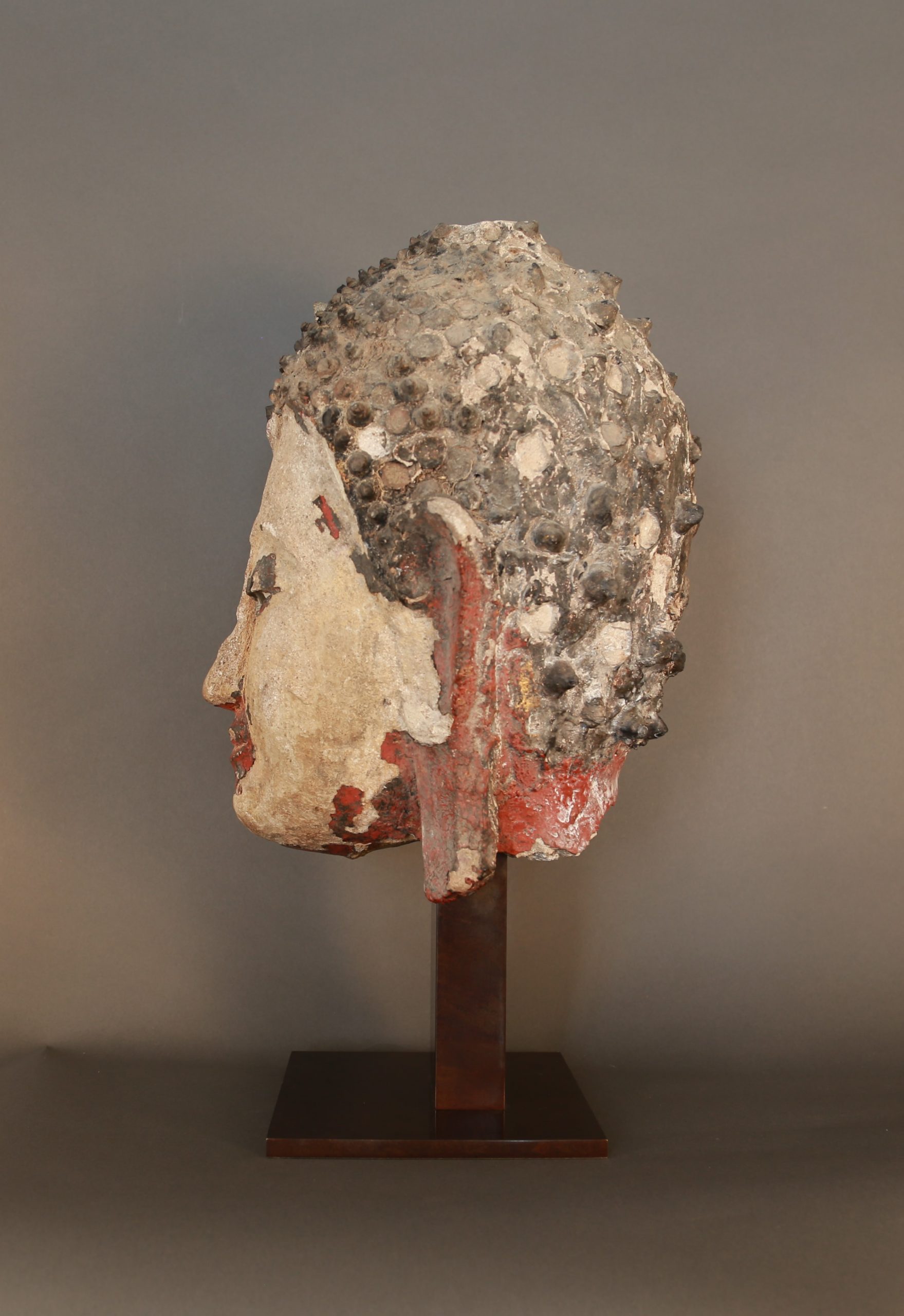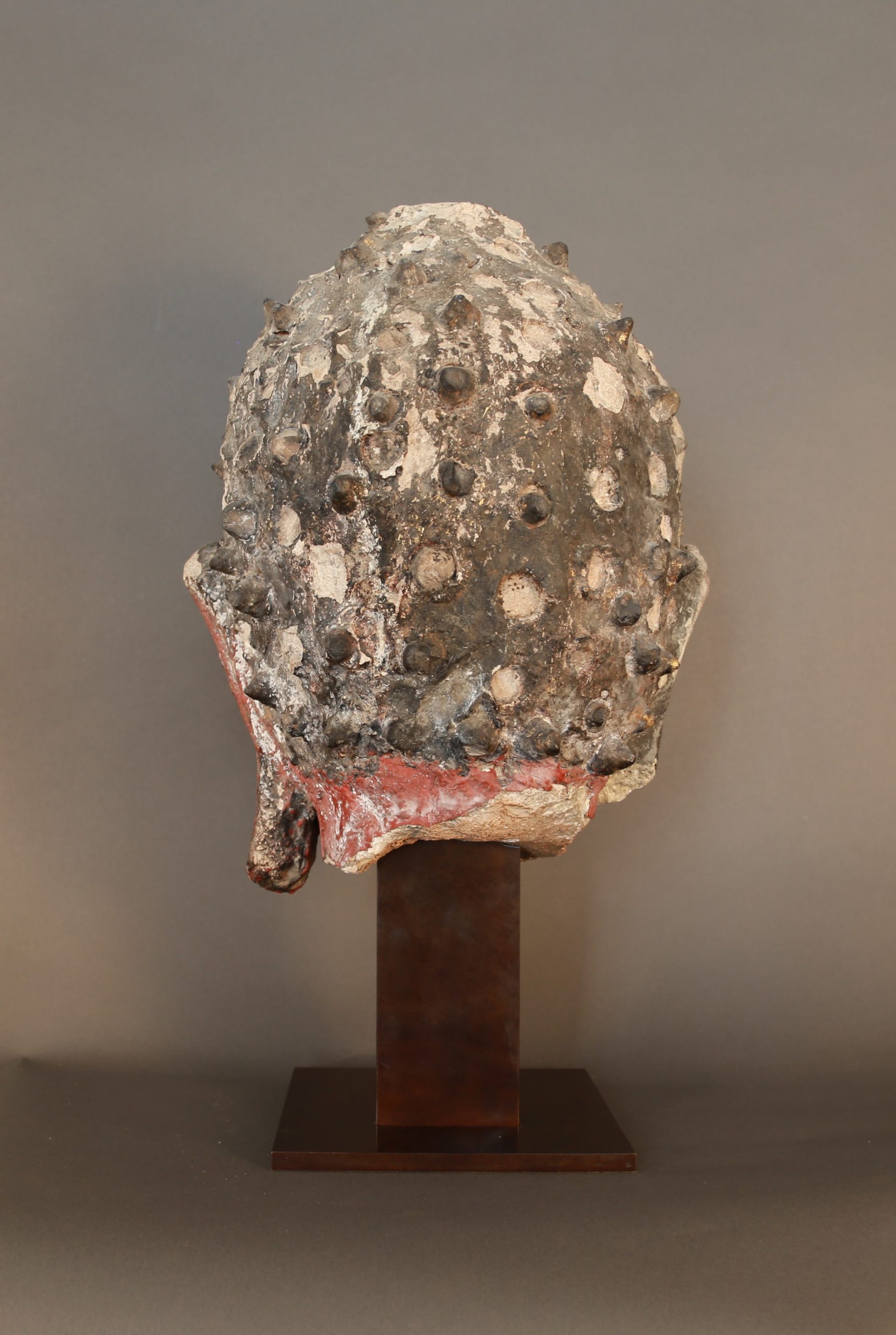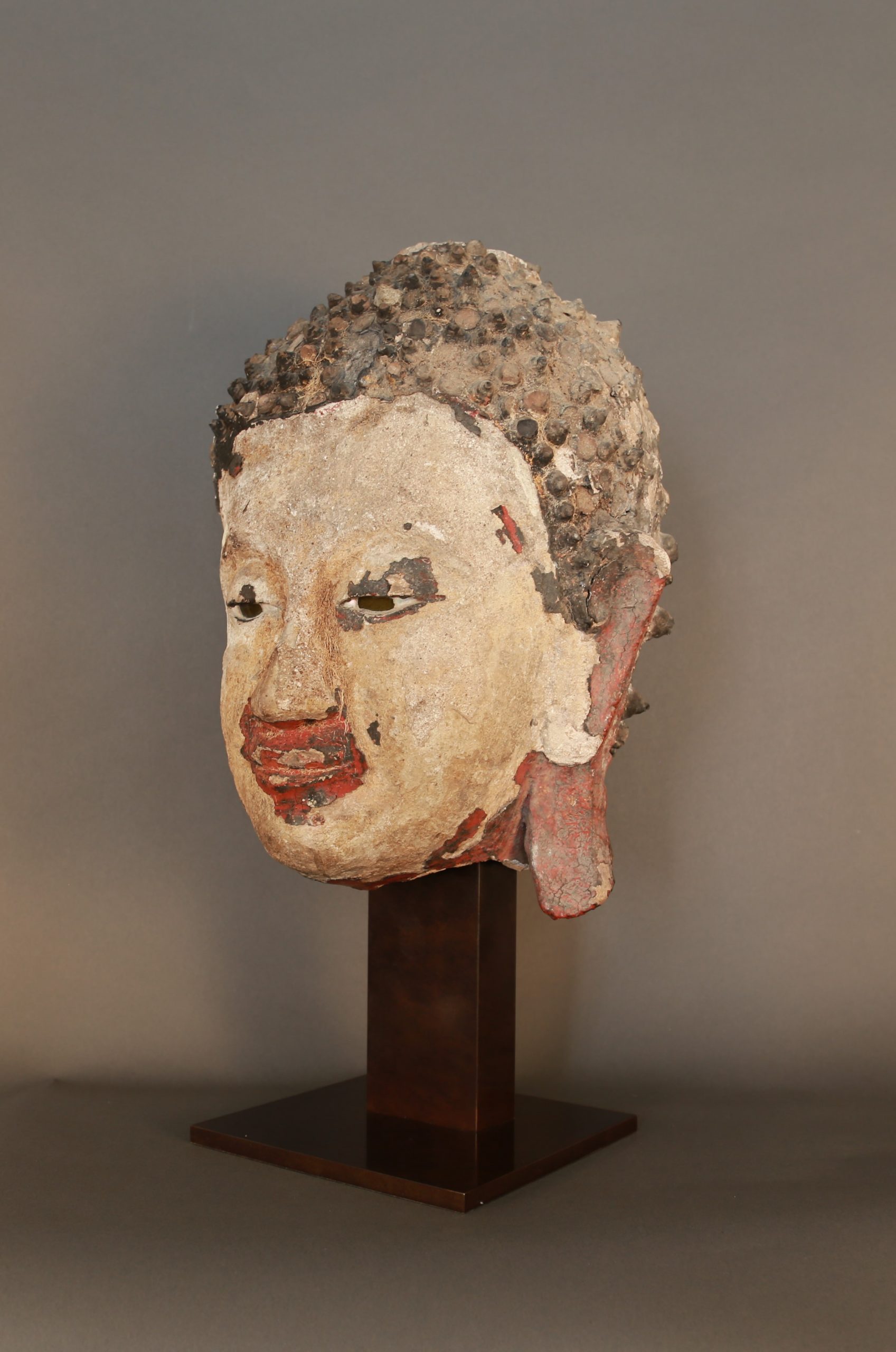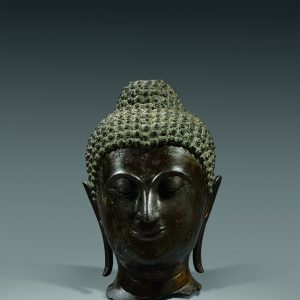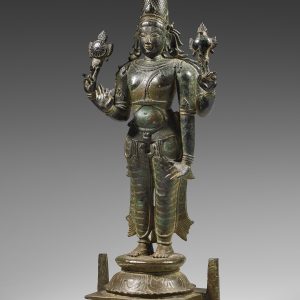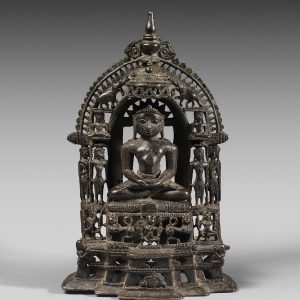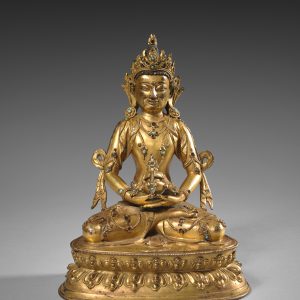Buddha head of Harīpunjaya
Stuccoed terracotta
Thailand
Circa 14th century, Mon kingdom of Harīpunjaya
H. 41 cm
Description
This large head of Buddha in stuccoed terracotta, undoubtedly coming from a monumental sculpture, is characteristic of the Mon kingdom of Harīpunjaya, located in the north of Thailand and whose capital was Lamphun. Dated from the end of the 13th – beginning of the 14th centuries, it measures 41 cm in height.
The kingdom of Harīpunjaya, founded in the 8th century, will last until 1292 and the capture of Lamphun by the Thais of the kingdom of Lanna. This kingdom developed alongside the Dvāravatī kingdom and the Khmer kingdom of Lop’burī, both of which brought clearly identifiable stylistic influences. The art of Harīpunjaya is the original combination of these artistic contributions, giving rise to sculptures of exceptional expressiveness. This head from the Lamphun region marks a break with the provincial mannered style developed in the region. Indeed, the relative naturalness of this head attests to the change of creative spirit imposed by a new order of artistic values that occurred in 1292. This beautiful head is undoubtedly one of the best examples of Harīpunjaya art in the 14th century then. that it still maintains itself as the cultural capital of Lân-Nâ, before being definitively supplanted by Chiang Mai.
We find on this piece the expressive character of the Môn features: the broad face with the forehead widening at the level of the temples framed by large ears with drooping lobes, the high and well-defined cheekbones, the broad nose and the very full lips edged with a thick double line. The eyes, encrusted to recreate the effect of the pupils, are flush with the face and the upper eyelid is lowered.
The hair, delimited by a characteristic edging still partially visible, consists of spiky conical curls which were traditionally modeled separately and then applied. The back of the head is in the round, and the curls of the hairstyle are figured there, smaller. This detail attests that the complete sculpture, probably in brick and stucco, could have been leaned against a wall, but was nevertheless probably also in the round.

